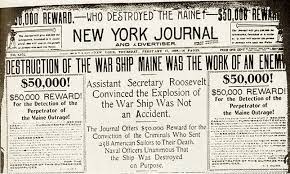For decades, the media has been very prominent in wars that have gone on around the world. From World War I to the Civil War, the press has always covered the events that unfolded. After World War I, the world was changed and people were seeking answers to how to continue living in this new uncertain world. In an article in The Harvard Gazette, a Harvard historian discusses the role of war journalism after the War and how journalist took the new world to their advantage.
Historian Nancy F. Cott, focuses on in her new book, “Fighting Words: The Bold American Journalists Who Brought the World Home Between the Wars.” The book focuses on the work of four American journalists, Dorothy Thompson, Vincent Sheean, John Gunther, and Rayna Raphaelson, between the two World Wars. One point that people today should take from her book is one parallel that she find true in the book and in the world today is that "international journalists then, including the ones in this book, by making it a major issue that Americans had to be concerned about these failings, showed that Americans could not take their constitutional system and its continuation for granted. I think that’s very true today, too."
Not only was journalism present in the two World Wars, but the Iraq/Vietnam War as well. The Atlantic has an article about The Iraq War and how the media is present in that and how the media actually changes what the public can see and know. Cullen Murphy talks about his experience as a journalist for The Atlantic while the Iraq War was going on.
Nothing about the fundamentals had changed for the better since Vietnam. War was still war. The White House still insisted on its version of facts, with questionable evidence to back them up. The press corps was larger and more fragmented than it had been in 1968, and the news moved at a faster pace. TV crews didn’t need to wait for an airplane to carry film canisters from Saigon to Tokyo for satellite transmission. Print journalists could write stories that would be published online within minutes. Cable channels aired news programming around the clock, and their reach was global. None of this fostered a spirit of calm analysis.Unlike in Vietnam, few of the reporters who went to Iraq were military veterans. Many came to the war without much relevant experience. It wasn’t just Iraqi culture that was unfamiliar. In an experiment, the Pentagon allowed some 600 journalists to embed with military units. Soon after arriving in Iraq, Michael Kelly wrote back about an orientation briefing for the embeds where the colonel in charge had to explain certain realities to a reporter from Japanese television, who wanted to know if instead of a backpack she could bring a roller-board suitcase.One takeaway from his article is that "the conflicts change, but the factors influencing the quality of the coverage, including ignorance, confusion, or competition, stay consistent."
News and press to go hand in hand with the coverage of wars has been a prominent issue for so long that even in 2007 the United States Institute of Peace contributed an article about the role of media in conflict.
There were three themes that were prominent in this article: international media has the potential to influence governments and international organizations, and as such can have an agenda-setting effect, these reports however are not always the most accurate reflection of the relative severity and risk of a particular conflict; donors that are interested in conflict prevention and sustaining stability should support local media, as it yields non-tangible results in war-torn communities, such as increased levels of trust, increased hope in the future of the country, and the ability to contribute to a peaceful society; and guarantees regarding the media and freedom of the press, as well as efforts to promote professional, objective, unbiased reporting, should be an integral part of any successful peace agreement.








